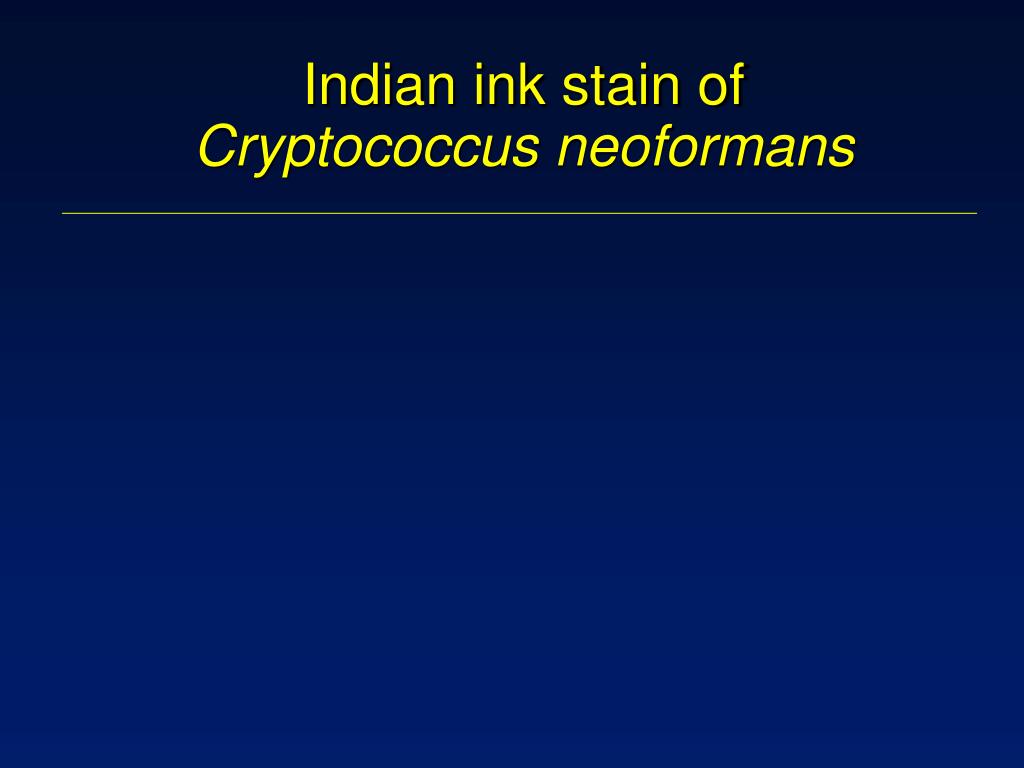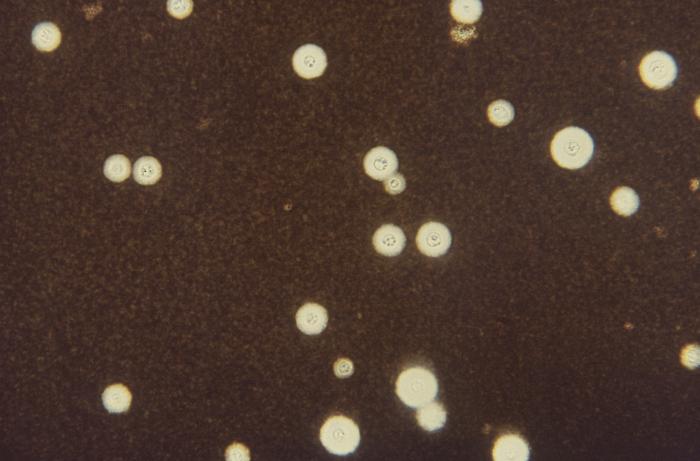

Of these, 30 (14.70%) cases were culture positive, 35 (17.15%) were positive for cryptococcal antigen and 16 (7.84%) patients were found to be positive by India ink preparation. The male: female ratio was observed to be 10:1. Results: Mean age of the patients was 32.45 years. The samples were cultured on Sabouraud's Dextrose Agar (SDA), and analysed using India ink preparation and cryptococcal antigen detection by the rapid Latex Agglutination assay. Materials and Methods: A total of 204 Cerebrospinal fluid (CSF) samples from HIV-positive patients (aged >18 years) showing signs and symptoms of meningitis were collected. In recent years, the incidence of cryptococcal meningitis has increased in both the HIV-positive and HIV-negative patients therefore there is a need for development of efficient methods for early diagnosis and treatment to reduce mortality and morbidity.Īim: To determine the incidence of cryptococcal meningitis in HIV/AIDS patients and to compare the results of latex agglutination test and India ink preparation with fungal culture examination. Ram Manohar Lohia Hospital, New Delhi, India.Į-mail: Cryptococcal meningitis, caused by Cryptococcus neoformans, an opportunistic fungal infection that affects immunocompromised Human Immunodeficiency Virus (HIV)/Acquired Immunodeficiency Syndrome (AIDS) patients. Professor and Consultant, Department of Microbiology, PGIMER and Dr Ram Manohar Lohia Hospital, New Delhi, India.ĭepartment of Microbiology, PGIMER and Dr. Associate Professor, Department of Microbiology, PGIMER and Dr Ram Manohar Lohia Hospital, New Delhi, India.ĥ. Junior Resident, Department of Microbiology, PGIMER and Dr Ram Manohar Lohia Hospital, New Delhi, India.Ĥ. Assistant Professor, Department of Microbiology, PGIMER and Dr Ram Manohar Lohia Hospital, New Delhi, India.ģ. Senior Resident, Department of Microbiology, PGIMER and Dr Ram Manohar Lohia Hospital, New Delhi, India.Ģ.


Shiwangi Sharma, Arvind Achra, Renu Kumari, Anuradha, Nandini Duggalġ. Different techniques, such as latex agglutination, enzyme-linked immunosorbent assay (ELISA), and lateral flow assays, can be used to detect the cryptococcal antigen.Cryptococcal Meningitis in HIV Patients from a Tertiary Care Centre in Northern India Detection of cryptococcal antigen by immunodiagnostic tests of the serum and the CSF provides a definitive diagnosis of the infection. The culture of the infected fluid yields cream-colored colonies in about 3-7 days, while staining with India Ink permits rapid identification of the Cryptococcus in direct CSF smears. Analysis of the fluid usually reveals a low white blood cell count, low glucose, and elevated protein, but could also be normal in approximately 25-30% of the cases. CSF analysis, culture, staining, and immunodiagnostic tests of CSF are the primary diagnostic tests that are performed to diagnose meningitis caused by Cryptococcus. Patients who present with symptoms of central nervous system dysfunction are evaluated with radiographic imaging of the brain to rule out the presence of elevated cerebrospinal fluid pressure.


 0 kommentar(er)
0 kommentar(er)
